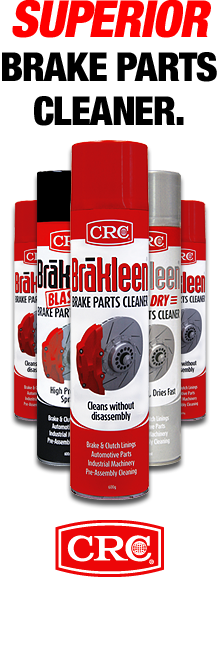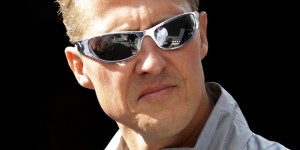

NZ Herald11:01am 3 November 2014

On Michael Schumacher’s bedside table is a gold cross that he gave to his son Mick, 15, eight years ago. Next to it is an ornate hairbrush, a present to daughter Gina-Maria, 17, when she was a small child. Near them, spread out in a row, is an array of good luck charms that the Formula 1 star wore during his races.
There is an amulet given to him by one of his racing team – and there is a Dzi bead, fashioned from quartz, which is said to protect its owner from “magic, misfortune and illness”. His wife Corinna wears a matching stone on a gold chain. She tells friends it gives her hope that one day her husband will “walk, talk and feel again”.
It is a hope she has been nurturing since last December, when the seven-times world champion driver suffered devastating head injuries when he skied at high speed into rocks in Meribel, France.
Five weeks ago, hopes for the 45-year-old star were raised when he was moved from a Lausanne rehabilitation centre to the extraordinary custom-built clinic in the grounds of his 35 million ($71.5 million) mansion in Gland, on the shores of Switzerland’s Lake Geneva.
All summer, construction work continued on the clinic, which has been designed to sit elegantly alongside the luxurious mansion.
The state-of-the-art medical facility is staffed round the clock by a 15-strong team specially trained by the Lausanne clinic to care for the man widely regarded as the greatest racing driver of all time. The weekly bill for equipment and staff is estimated to be more than 100,000.
Strict security ensures no photographs of the racing star are taken.
For hours each day, Corinna sits amid the machines and medical tubes, talking softly to her husband.
But for all the intensive treatment, the devoted nursing care and the charms and good luck tokens, the tragic reality is that Schumacher, one of the world’s wealthiest sportsmen, has made little improvement since he fell on the Meribel slopes, cracking his head on a boulder, while skiing.
In spite of all the optimistic bulletins released by his management – which talk of “steady progress” and “continued hope” – Schumacher exists in a twilight world in which he has barely any grasp of what is going on around him.
Since being brought out of an induced coma last month, it is believed he is in a state of what is termed “minimal consciousness”, in which he can briefly move his eyes towards persons or objects, and can answer simple questions by fluttering his eyelids and making small nods.
But he remains immobile and is unable to follow instructions, has no speech or other forms of communication and has no purposeful movement of his limbs. He is surrounded by tubing, hooked up to machines that feed him, enable him to breathe, remove waste from his body and monitor vital signs.
Friends have voiced their concerns about hopes being raised for his future. Sabine Kehm, Schumacher’s manager, recently announced that he was no longer in a coma and was on “the long process of recovery”, and claimed he was communicating with his wife and children.
But the statement left Dr Gary Hartstein, a former medical delegate for the Formula 1 World Championship who has known the driver since his early racing days, deeply unsettled. Now Clinical Professor of Anaesthesia and Emergency Medicine at the University of Liege Hospital in Belgium, he insists the reality is that Schumacher’s chances of regaining any semblance of normality are virtually non-existent and has warned fans to prepare for the worst.
“As time goes on it becomes less and less likely that Michael will emerge to any significant extent.”
Insistent that the racing driver was probably still, in effect, in a coma, he added: “Life expectancy for a comatose patient who does not improve neurologically is measured in months to a relatively few years.” The world, he said, was witnessing the “long goodbye” of its greatest racing star.
Of course it is hugely difficult to determine the exact state of his condition. But a family source backs up Hartstein’s claim that there is very little improvement.
Yet, the decision of the unendingly devoted Corinna to build the new clinic is a powerful statement of hope.
Professor Peter Vajkoczy, who heads the neurosurgical clinic of the world-renowned Charite Hospital in Berlin, believes it could prompt a small turning point in Schumacher’s long battle. “If financial resources allow for someone to create their own home rehabilitation facility complete with gym, and to bring the necessary medical staff and therapists to it, then that is certainly a [turning] point,” he insists.
11:08am 26 January 2015
| Autosport | 0 |
Ferrari’s new team boss maurizio arrivabene believes rule changes planned for 2017 must be a revolution for formula 1… More >
9:14am 23 January 2015
| Autosport | 0 |
Fia president jean todt and medical chief gerard saillant are planning legal action against former formula 1 driver philippe… More >
11:17am 22 January 2015
| Autosport | 0 |
Force india has unveiled its striking new colour scheme in an event in mexico on wednesday, ahead of a… More >
11:14am 22 January 2015
| Motorsport.com | 0 |
World champion lewis hamilton’s father is involved in plans to revive a south african grand prix. since splitting as… More >
11:12am 22 January 2015
| Motorsport Magazine | 0 |
will there ever be a lewis hamilton of motogp, a black king of motorcycle… More >
4:41pm 17 January 2015
| NZ Herald | 0 |
To have back-to-back motorsport festivals held in your honour must be pretty cool. that’s what awaits former kiwi formula one… More >